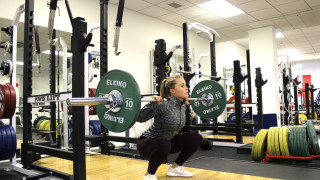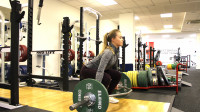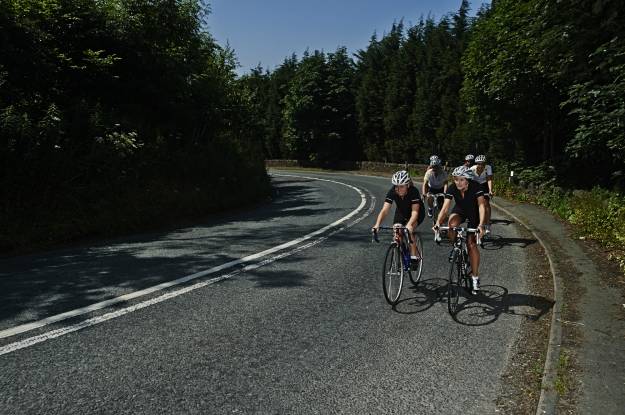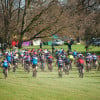Knowledge Level: Intermediate
In all levels of the British Cycling Training Plans, there are days where you are given the option of a cross training workout. However, One of the golden rules of sports conditioning is specificity. This states that the best training for an activity is doing that activity. So, if you’re training for cycling, why have we scheduled in time spent exercising off your bike and what should you do on those days?
Robustness
In day to day life, we have to deal with movements and activities outside of sitting on a saddle and turning pedals. Gardening, DIY, lifting shopping out of the car or even having a kick about with your kids, will load and stress your body in a very different way to the extremely limited range of movement you experience on a bike.
This can easily result in pulls or strains which can mean enforced time off the bike. Cross training allows you to develop a broader base of conditioning, making you more robust all-round and reducing your injury risk.
Health
As an activity, cycling has a number of proven health benefits and is especially good for cardiovascular wellness, weight management and, being non-impact, is ideal for people with joint issues. However, because cycling isn’t weight bearing, if it is your only activity, bone health can suffer. This is especially important for post-menopausal women but, with documented cases of top professional cyclists suffering from low bone density, is an issue that all cyclists should be aware of.
For men older than 30, muscle mass tends to decline and this process can be speeded up by endurance activities. This can result in a weaker all-round physique, reduced robustness and, with less calorie burning muscle, a lower metabolic rate and potential fat gains. Strength work can slow down and even reverse this muscle mass loss.
Variety
Including non-cycling workouts in your training will keep your mind fresh, prevent staleness and maintain motivation levels. It’s all too easy, when following a structured training plan, for the main activity to become a chore rather than a pleasure and, by varying your training, you can stop this happening with cycling.
Time
Fitting your training in around your non-cycling life can be difficult. You might find you have only got 15 minutes to spare to do something, are travelling and don’t have your bike with you or we’re suffering from an Arctic cold snap and riding just isn’t an option. Following a structured training plan, where you know exactly what needs to be done each week, certainly makes scheduling easier but having options and a flexible mindset will allow you to easily adjust it to the demands of real life.
Recovery
Certain activities, such as yoga, Pilates, flexibility training and swimming, can enhance the recovery process during hard training blocks. Listen to your body and, if you’re feeling tired on your optional cross training days, consider a recovery focussed session. This could even be booking in for a massage, taking a nap or just spending some dedicated chill-out time off your feet. More is not always more and recovery is as important to fitness as the actual training.
With so many cross-training activities to choose from with various benefits, which should you opt for to best complement your cycling:
Strength work
Whole body strength interventions have played a vital role in Great Britain squad riders staying on their bikes for longer, improving their power and staying injury free. Strength training plays an integral part with both endurance and sprint squads, developing riders at each stage of the World Class Programme. Many cyclists shy away from strength work as they’re concerned about weight gain but this is a misplaced worry and it’s perfectly possible to develop functional strength without building bulk.
Another common mistake is thinking that you should lift low weights for high reps to mimic the endurance requirements of cycling. This is a complete fallacy as, even if you perform three sets of 50 reps, this is still nowhere near the thousands of pedal strokes you’ll make during a typical ride. To build strength you need to keep the weights fairly heavy and the reps relatively low. This cycling specfic strength routine is ideal.
Flexibility work
As well as helping to combat the tightnesses and imbalances that can develop with time spent on the bike, stretching and other forms of flexibility work, such as yoga and foam rolling, will also help to remedy soft tissue and postural problems that stem from our everyday lives. This especially applies is you spend a lot of time sat at a desk or driving, where the hunched over posture is compounded on the bike.
Post-ride flexibility work is often half hearted, with getting warm, showered, changed and refueled bigger priorities. So assigning some of your cross-training time to some focussed flexibility work can be the best way to make sure you do it. Follow this mobilisation routine for back and lower body and this upper body routine.
Fitness classes
If you already belong to a gym or health club, the group fitness classes on offer can be an effective, motivational and social way to fill your cross-training allocation. Find out what to expect at a number of popular classes and how they will benefit your cycling and any potential risks you should be aware of.
Team and racquet sports
If you play 5-a-side football, netball, tennis or squash, you can use your cross-training time to keep up this activity. The dynamic ranges of movement involved and the stop-go sprint efforts can perfectly compliment the more limited movements and steadier endurance efforts of cycling.
However, as these activities can be fairly high intensity, you’ll need to monitor how you’re recovering from them and if they’re having a detrimental effect on your cycling workouts. You may find, especially during heavier volume training weeks, that you’ll need to substitute a more recovery focussed activity in.
Running
For many cyclists running is a dirty word but, for calorie burn per minute of exercise, as an all weather option, as a convenient option when travelling and for straight out of your door ease, it is hard to beat. For more variety, greater strength and fitness gains and less impact on your joints try to run off-road.
The more hills and mud you can find the better. Whatever running you do, be sure to invest in a quality pair of running shoes. Seek advice at a specialist running shop about the style of shoe that will best suit your running style and the type of terrain you intend to run on.
If you use heart rate to monitor your intensity on the bike, you can do the same with running. You will probably find that your running training zones will be different to those on the bike, usually 10-15 beats higher, primarily because it is a weight bearing high impact activity.
As with team and racquet sports, monitor your recovery from running carefully. Especially if you are new to it, you may find it takes more out of you than you expected. Listen to your body and, if necessary, factor in some additional recovery time.
Swimming
Swimming is an excellent cross training activity for cyclists. As your bodyweight is supported by water, it is zero impact and this makes it an excellent recovery session. You can still work your heart and lungs hard, get a great training effect and hit your upper body but your legs have to do a minimal amount of work. The passing of the water over your muscles also has a therapeutic effect and this will further enhance recovery. There may also be a cold plunge pool or the possibility of some relaxing recovery time in the hydrotherapy pool or jacuzzi once you have finished your swim.














